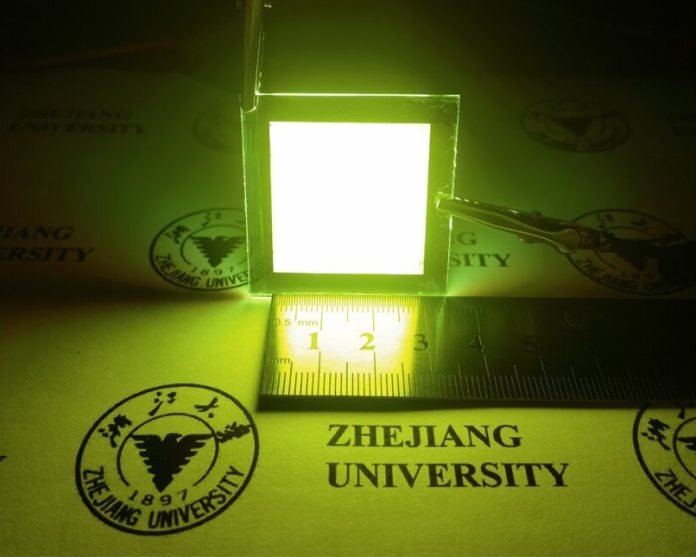
Healthy lighting is becoming increasingly important as we learn more about the impact of light on our well-being.
Traditional lighting technologies, like the ones used in most LEDs, rely on methods that often include harmful blue-violet light, which can be damaging to our health.
These traditional lights also use materials that are not environmentally friendly, such as rare-earth metals and toxic substances like cadmium and lead.
Additionally, the colors in these lights can become unstable over time, leading to inconsistent lighting.
A team of scientists from Zhejiang University in China, led by Professors Xingliang Dai and Zhizhen Ye, has developed a promising new material that could revolutionize healthy lighting.
They have created a copper iodide (CuI) nanocluster that offers a safer and more stable alternative to traditional lighting technologies.
This new material is made using a one-step process that involves dissolving the ingredients and then depositing the solution to form a film.
By carefully choosing the right chemicals and solvents, the researchers were able to produce a film that emits light across a wide range of colors.
This film also boasts high luminous efficiency, meaning it produces a lot of light with minimal energy. The material is stable, both in regular environments and at high temperatures, making it a reliable option for long-term use.
The researchers then used this copper iodide nanocluster to create LEDs. These LEDs have several impressive qualities: they emit stable light even when the voltage changes, have a high quantum efficiency (which measures how effectively they convert electricity into light), and can reach brightness levels up to 50,000 nits.
They also have a long operating life of 137 hours, and their performance remains consistent whether they are used in air or in an inert atmosphere.
One of the most significant advantages of these new LEDs is that they do not emit harmful blue-violet light.
Instead, the copper iodide nanocluster provides a broad spectrum of light that is more stable and less likely to cause color shifts over time. This makes the light not only healthier for people but also more reliable.
Moreover, the material is environmentally friendly and cost-effective. The use of copper iodide and organic ligands in the nanocluster means these LEDs avoid the environmental issues associated with rare-earth metals and toxic elements.
The simple solution-based process used to make these LEDs also lowers production costs and makes it easier to manufacture them on a large scale.
The team believes that with further refinement, these copper iodide nanocluster LEDs could become the next generation of healthy lighting technology.
Their work highlights the potential for eco-friendly materials to offer better, safer lighting solutions for the future.



